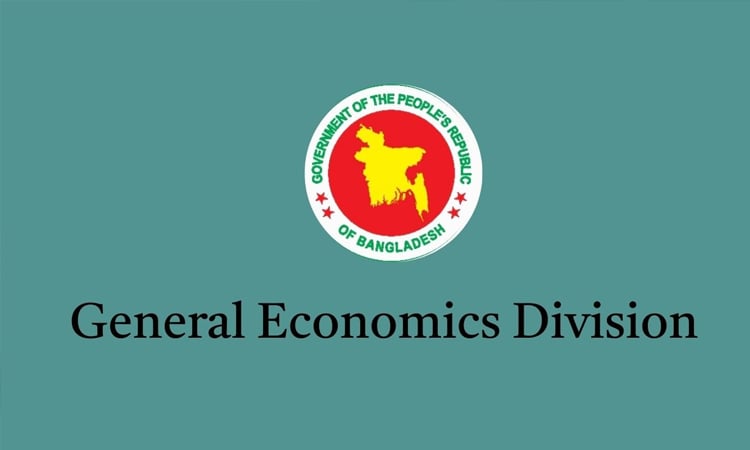News Flash
News Flash

DHAKA, Oct 21, 2025 (BSS) - Bangladesh's latest Economic Update & Outlook depicts a picture of cautious optimism for the coming months, with inflation showing signs of moderation.
According to the October 2025 report released by the General Economics Division (GED) of the Planning Commission, deposit growth has rebounded in recent months, reflecting improving public confidence following reforms by the government and the central bank.
Measures such as lowering the interest rates on national savings certificates, enhancing digital financial inclusion through e-money and agent banking, and routing government cash transfers via banks have contributed to this trend.
Strong remittance inflows have also bolstered deposit growth, while upcoming election-related activities are expected to inject temporary dynamism into the economy and boost investors' sentiment.
Inflation edged up marginally in September, reaching 8.36 percent compared to 8.29 percent in August, maintaining an elevated but broadly stable trend. Food and non-food inflation followed similar trajectories, rising by 0.04 and 0.08 percentage points, respectively.
The report noted that inflation has exhibited a rigid pattern since August 2022, averaging 9.56 percent over the past 38 months. The sharp fuel price hike of August 2022-exceeding 50 percent in the wake of the Russia-Ukraine conflict-was cited as a major inflection point, triggering sustained price pressures in subsequent months.
While rice remains the dominant contributor to food inflation, its share has declined from 48.37 percent in August to 45 percent in September. Contributions from fish, meat, fruits and edible oils remain significant, whereas root crops and vegetables saw a decline in inflationary impact. Prices of potatoes and onions fell sharply, easing some pressure on consumers.
The rice prices began to ease in September, falling by about one percentage point from August. Inflation in all three categories of rice-coarse, medium and fine-declined.
To ensure food security and price stability, the government approved the import of 50,000 tonnes of rice from India and 220,000 tonnes of wheat from the United States on 8 October.
An additional 400,000 tonnes of grain are expected to arrive by November. Current government food grain stocks stand at 1.55 million tonnes, while distribution so far this fiscal year has increased by 24 percent compared with the same period last year.
Bangladesh's foreign exchange reserves have shown a steady recovery, rising from $ 25.5 billion in March to $ 31.4 billion in September 2025. Under the BPM6 measurement, reserves increased from $ 20.4 billion to $ 26.6 billion during the same period.
This improvement reflects a stabilizing balance of payments, supported by higher export earnings, moderated import payments, and stable remittances. The GED noted that these developments signal a strengthened external position and effective exchange rate management by Bangladesh Bank.
After several months above the $4 billion mark, exports slowed to $ 3.63 billion in September, down from $ 3.92 billion in August and $ 4.77 billion in July. The slowdown was attributed mainly to seasonal factors and a dip in ready-made garment (RMG) shipments, which still account for over 80 percent of total export receipts.
Non-RMG sectors such as jute goods, leather and light engineering products, however, continued to perform steadily, mitigating the overall decline. Cumulative export earnings for July-September 2025 remain higher than in the same period last year, demonstrating the sector's resilience and improved logistical efficiency.
Exchange rate indicators remained broadly stable between June and September 2025, with the Taka trading around Taka 121-122 per US dollar. The Real Effective Exchange Rate (REER) increased moderately from 121.2 to 127.2 during the same period, reflecting gradual competitiveness gains supported by productivity improvements and moderate inflation differentials.
The report said that as of August 2025, total deposits in the banking system grew by 10.01 percent year-on-year, while broad money (M2) expanded by 7.78 percent.
Revenue collection has picked up pace, with the National Board of Revenue (NBR) collecting Taka 54,423 crore during July-August 2025, a 21 percent increase from a year earlier. Despite this strong growth, collections fell short of internal targets due to subdued import activity, which dampened customs revenue.
The VAT collection showed the strongest performance, rising by 33.8 percent, followed by a 24 percent increase in income tax. Customs revenue, however, declined by 4.5 percent year-on-year.
To address administrative inefficiencies, the NBR has launched a major reform drive, establishing 12 new commissionerates and customs houses and creating 3,600 new positions across VAT and customs divisions. The restructuring aims to widen the tax net, modernise operations, and strengthen monitoring-particularly at the new terminal of Dhaka airport.